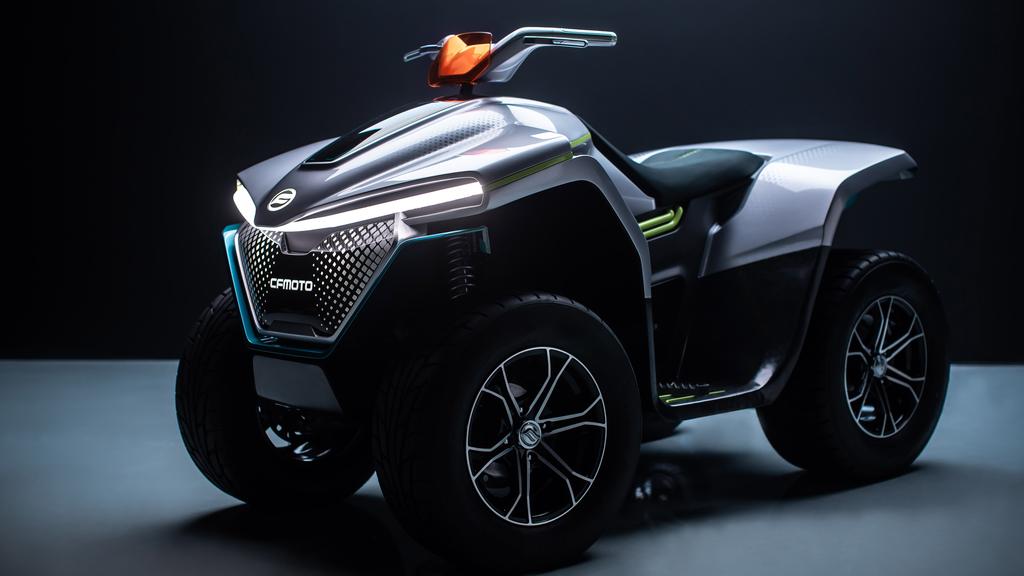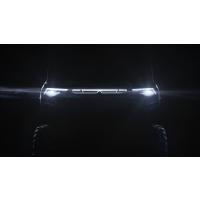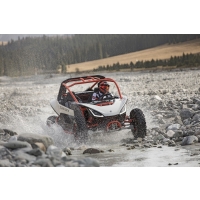
With environmental concerns rising on all fronts, manufacturers are looking towards electrical power trains as the solution. We know the concept works when it comes to the auto sector, but what it looks like in powersports is a whole other story.
Piles of immediate torque would certainly fit in the current demand for high performance all terrain vehicles, but it also raises a few questions regarding its viability. Their weight, range, cost of maintenance all the way down to unique safety issues like lithium battery fires can make the new EV segment difficult with current technology. All of this leads to a divisive topic as we here at Dirty Life have seen on our social media.

Something as simple as the look that seems to come with EVs can be the decision maker for some. The above image is a CF-Moto concept unveiled at the 2019 EICMA motorcycle show in Milan, Italy named the “Evolution A”. A far cry from your dads 1996 Honda Foreman.

The push toward electric technology has allowed new (or atleast new to powersports) companies to throw their hat in. This creates more competition which is always healthy as it pushes innovation and fair pricing.
Nikola Powersports released the Nikola NZT, boasting a market crushing 590hp, 775ft-lbs of torque, a 0-60MPH of 4.0 seconds with a range up to 150 miles (or around 240km). From our experience, these are more than acceptable numbers to meet the performance needs of our customers.

A more familiar manufacturer in North America, Polaris, also decided to move forward with electric UTVs with the 2021/2022 Polaris Ranger EV. Although their approach is a little closer to home when compared to what we discussed so far. The Ranger EV looks identical to its combustion engine counterpart, dropping any idea that the vehicle has to look futuristic.
Everything you have come to expect of the Ranger is still there. 1,000lbs payload, 1,500lbs towing capacity and 10” ground clearance are all numbers we can understand. Where it all takes a turn is the new single 48-Volt High Efficiency AC-Induction Motor making an interestingly low seeming 30hp.
Their marketing targets ranchers and hunters alike with the fact that it is quiet and green. Also stating on their website that “the Ranger EV needs little maintenance” which without long term testing we don’t know to be true yet.

Manufacturers like Segway have also entered the market recently (yes, that segway) with their version of electric technology, a hybrid solution. The Snarler, Villain and Fugleman use a combination of a combustion engine paired with their electric motor. This provides multiple operating modes to run on gasoline generating power for the “Pure EV Mode” full electric drive. This can only be done at 51% or higher battery charge or the “Range Extender EV Mode” will resume to charge the system.
Again, all numbers we have come to expect although unlike the Polaris EV, the Segway Villain Sport OHV is creating a claimed 196HP making it one of the highest horsepower side by sides straight from a dealer.

This is far from a complete list of every EV powersports. BRP pledged a cool $300 million dollars to develop EV machines by 2026. Even Tesla threw in a fully electric sport ATV in for good measure with the release of their Cyber Truck. It is highly likely every other manufacturer is also putting a plan in place to join the EV powersports market.
With all of this being said, a few great points were made by our following on social media. How will these machines handle the harsh off road environment? With models like the XMR from Can-Am, can we expect them to play in the deep water and mud like their combustion counterparts? What is different about handling a lithium battery fire? What does the powertrain's longevity look like? Of course the most popular, if you run out of battery in the middle of a forest what does an electric jerry can look like? What does the electric aftermarket look like?
These are only some of the questions we believe need to be answered before the market dives into the world of EV powersports.









